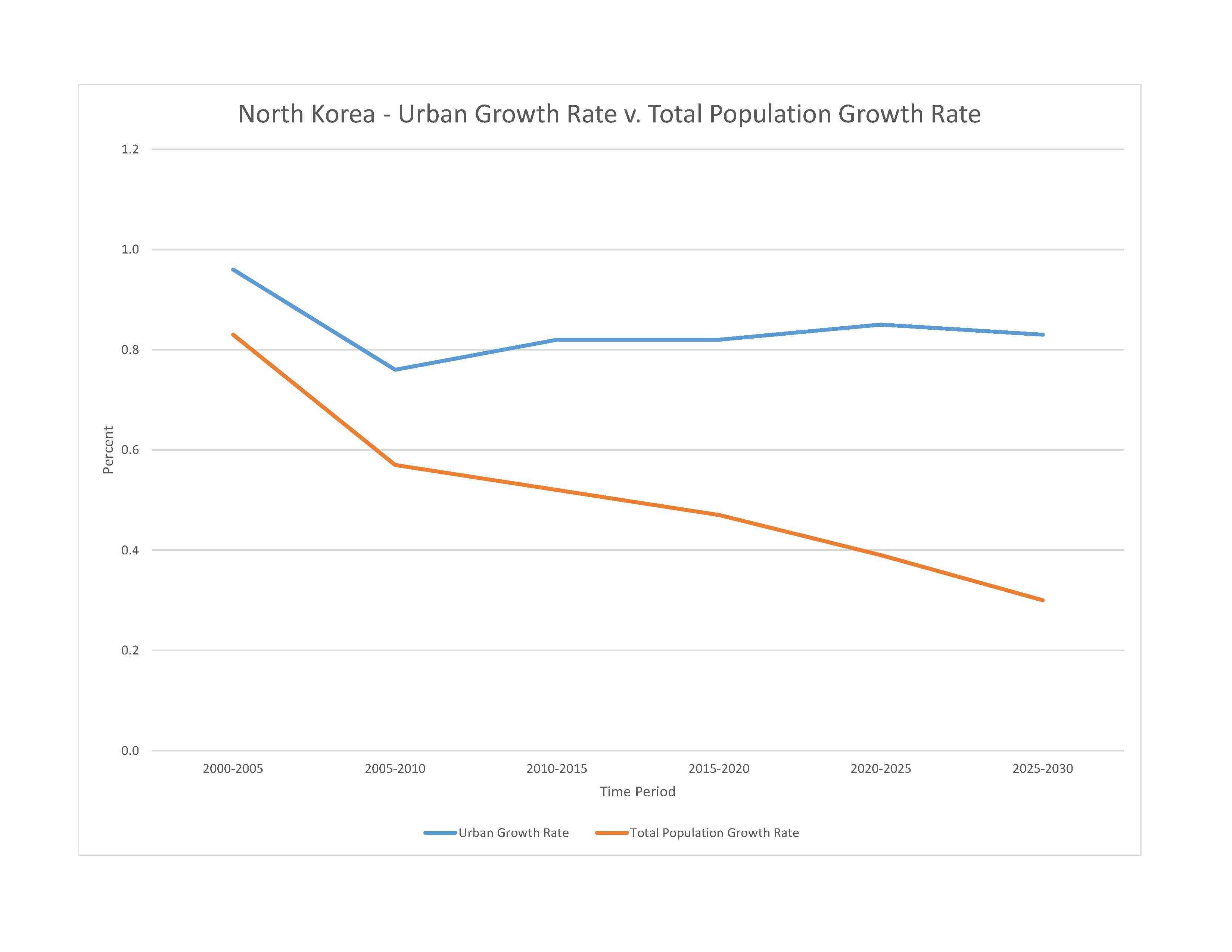
26,072,217 (2023 est.)
noun: Korean(s)
adjective: Korean
racially homogeneous; there is a small Chinese community and a few ethnic Japanese
Korean
major-language sample(s):
월드 팩트북, 필수적인 기본 정보 제공처 (Korean)
The World Factbook, the indispensable source for basic information.
Korean audio sample:
traditionally Buddhist and Confucian, some Christian and syncretic Chondogyo (Religion of the Heavenly Way)
note: autonomous religious activities now almost nonexistent; government-sponsored religious groups exist to provide illusion of religious freedom
0-14 years: 20.24% (male 2,696,287/female 2,580,346)
15-64 years: 69.16% (male 8,992,254/female 9,040,025)
65 years and over: 10.6% (2023 est.) (male 992,424/female 1,770,881)
total dependency ratio: 43.5
youth dependency ratio: 27.2
elderly dependency ratio: 16.3
potential support ratio: 6.1 (2021 est.)
total: 35.6 years (2023 est.)
male: 34.2 years
female: 37.1 years
0.4% (2023 est.)
13.4 births/1,000 population (2023 est.)
9.5 deaths/1,000 population (2023 est.)
0 migrant(s)/1,000 population (2023 est.)
population concentrated in the plains and lowlands; least populated regions are the mountainous provinces adjacent to the Chinese border; largest concentrations are in the western provinces, particularly the municipal district of Pyongyang, and around Hungnam and Wonsan in the east
urban population: 63.2% of total population (2023)
rate of urbanization: 0.85% annual rate of change (2020-25 est.)

3.158 million PYONGYANG (capital) (2023)
at birth: 1.06 male(s)/female
0-14 years: 1.04 male(s)/female
15-64 years: 0.99 male(s)/female
65 years and over: 0.56 male(s)/female
total population: 0.95 male(s)/female (2023 est.)
107 deaths/100,000 live births (2020 est.)
total: 16.2 deaths/1,000 live births (2023 est.)
male: 17.9 deaths/1,000 live births
female: 14.5 deaths/1,000 live births
total population: 72.9 years (2023 est.)
male: 69.5 years
female: 76.5 years
1.82 children born/woman (2023 est.)
0.88 (2023 est.)
70.2% (2017)
improved: urban: 97.8% of population
rural: 89.1% of population
total: 94.5% of population
unimproved: urban: 2.2% of population
rural: 10.9% of population
total: 5.5% of population (2020 est.)
N/A
3.68 physicians/1,000 population (2017)
improved: urban: 92.7% of population
rural: 73.1% of population
total: 85.3% of population
unimproved: urban: 7.3% of population
rural: 26.9% of population
total: 14.7% of population (2020 est.)
6.8% (2016)
total: 3.61 liters of pure alcohol (2019 est.)
beer: 0.12 liters of pure alcohol (2019 est.)
wine: 0 liters of pure alcohol (2019 est.)
spirits: 3.48 liters of pure alcohol (2019 est.)
other alcohols: 0 liters of pure alcohol (2019 est.)
total: 17.4% (2020 est.)
male: 34.8% (2020 est.)
female: 0% (2020 est.)
9.3% (2017)
69.7% (2023 est.)
women married by age 18: 0.1% (2017 est.)
N/A
definition: age 15 and over can read and write
total population: 100%
male: 100%
female: 100% (2015)
total: 11 years
male: 11 years
female: 11 years (2015)
NOTE: The information regarding Korea North on this page is re-published from the 2024 World Fact Book of the United States Central Intelligence Agency and other sources. No claims are made regarding the accuracy of Korea North 2024 information contained here. All suggestions for corrections of any errors about Korea North 2024 should be addressed to the CIA or the source cited on each page.
This page was last modified 04 May 24, Copyright © 2024 ITA all rights reserved.